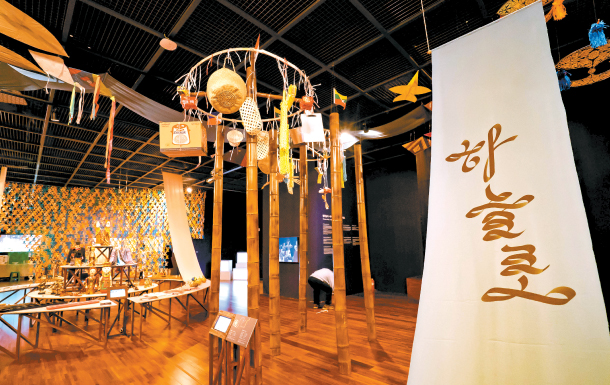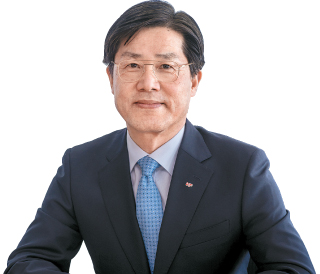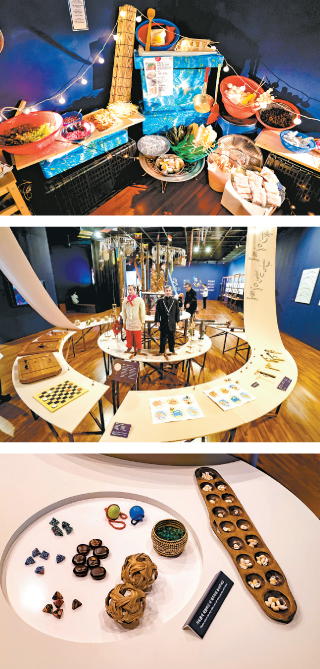Asean Culture House makes its mark in Busan: In its first year, the center has been a hit with locals in the port city

The “ASEAN Seen Through Traditional Leisure Activities” exhibition has been organized to celebrate the first anniversary of the culture house’s opening. [ASEAN CULTURE HOUSE]
The culture house opened on Sept. 1, 2017, as a result of the Joint Statement of the Asean-ROK Commemorative Summit held on Dec. 12, 2014 in Busan. The land was donated by the city of Busan and the culture house is run by the Korea Foundation (KF), the public diplomacy organization funded by the government which is dedicated to spreading Korean culture overseas and also to providing opportunities for Koreans to learn more about foreign cultures.
The Asean Culture House has been working to provide chances for Busan residents to interact with other cultures, through some 40 programs that have been held at the venue, centering on different cultural aspects of the 10 Asean member countries - Brunei Darussalam, Cambodia, Indonesia, Lao PDR, Malaysia, Myanmar, the Philippines, Singapore, Thailand and Vietnam. Each month since March, the ACH has focused on a single member country - this month, they are featuring Singapore.
From seminars and exhibitions to cooking classes and movie screenings, the ACH has acted as a second home for foreign Busan residents who seldom get the chance to soothe their homesickness, according to Lee Si-hyung, president of the Korea Foundation.
“For Korean residents, the Asean Culture House allows them to come in contact with Asean cultures, which they can’t easily do in their everyday lives. And for the international residents, this is a place where they can come together and feel at home along with their friends,” said Lee.
President Lee sat down with the Korea JoongAng Daily on the culture house’s anniversary, and expressed gratitude for the venue’s success and talked about his hopes for an even better future. The following are edited excerpts from the interview.

Lee Si-hyung
A. The Asean Culture House has held a variety of programs and exhibitions, and I think it’s safe to say that we have settled down quite well within the year that we were given. We have seen over 25,000 visitors, which was more than what we expected, and the cultural exchange between Korean and foreign residents has been very popular. For instance, when we open up a cooking class, the 30-something slots get filled online within just five minutes.

“ASEAN Seen Through Traditional Leisure Activities” is an exhibition that looks at the traditional games played in the 10 different member countries of Asean along with other traditional cultural activities, pictured above and center. Top, a Korean traditional food market scene. The props are actual ingredients to make Korean hot noodles. [ASEAN CULTURE HOUSE]
The culture house was built in Busan as a result of the 2014 Asean-ROK Commemorative Summit. Though we had our worries in the beginning, the culture house has been received quite well here in Busan. Not only is Busan a city that’s opened up to foreign cultures a long time ago, it’s also home to approximately 20 percent of the Asean population that lives in Korea.
If we were located in Seoul, then we could have reached out to the many people who live in the capital region. But it may actually have been more difficult in reality, as there are so many facilities and attractions in Seoul. For instance, there’s the Asean-Korea Centre (an intergovernmental organization built in 2009, located in central Seoul), and people wouldn’t have been able to tell us apart from them. Because there’s not many cultural facilities in Busan, the local residents are all very interested in what we do and the city government has also been very cooperative, both things we are grateful for.
Even though the Asean countries are situated much closer to us than the western countries, we tend to feel further away from them compared to countries like the United States. Why do you think that is?
It’s basically because we feel that we are different from them, and that we are better than them. Korea has had a very special and unique relationship with the United States over the past 70 years, and so it’s no wonder that we feel familiar with them. But what we don’t realize is that the familiarity is something that we are taught - something that we learn as we grow up. Things like admiration and a longing to become similar to them have been acquired very naturally through the course of our lives.
So naturally, if we are taught about the Asean countries as much as we are about the West, then the intimacy will soon follow. We need to know more, to try to know more and to be exposed more to their culture, their history and their lives. Only then will we be able to see that we have more in common with them than we think.
Why is it important that we learn more about them?
Korea has already become an international society, and even though we can’t feel it right now, the growing number of foreigners is going to hit us one day. And when it does, we have to be prepared and educated on how to live different from how we do now, which is estranged from them. It’s crucial that we teach our children from a young age, because it’s difficult for a grown-up to become close to something they haven’t seen before.
What hopes do you have for the future of the ACH?
First of all, many of the Asean-related businesses that the KF are running right now will be transferred to the ACH. The KF runs on a business-related team system, whereas the ACH is a very region-specific institute that will allow it to focus on the New Southern Policy of the current administration. It will stand on two main pillars - exhibitions and performances - but also focus on building new programs to strengthen the Korea-Asean relationship.
We’ve had a smooth start, so now it’s important to keep it going in the future. The stone has started rolling, and we’re hopeful that the future will be even brighter.
BY YOON SO-YEON [yoon.soyeon@joongang.co.kr]










with the Korea JoongAng Daily
To write comments, please log in to one of the accounts.
Standards Board Policy (0/250자)